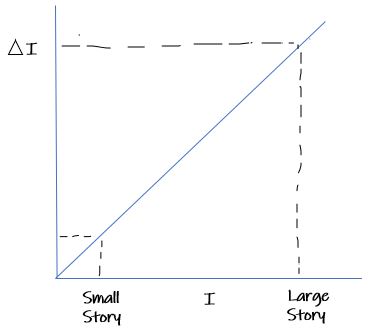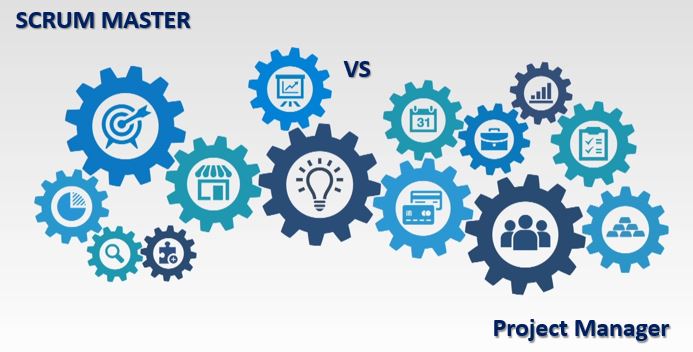Many organizations are increasingly embracing agility and improving their ability to respond to change, deliver value to customers faster, and achieve better results. Large companies across different industries, such as IBM, Google, McKinsey, Netflix, and Uber, have become supporters of Agile.
While Agile Transformation offers organizations many benefits, including a shared purpose that motivates teams, a renewed focus on customers, improved cross-team collaboration, quicker adaptation and pivot, higher ROI on efforts, and better creativity and innovation, it is a complex journey that requires adequate planning and guidance to achieve success.
An Agile Transformation Roadmap is a great tool to help organizations lay down a clear and structured path for any organization seeking to address the necessary changes systematically and implement a successful agile transformation.
In this article, we will discover an Agile transformation roadmap and its importance in achieving a successful Agile transformation and creating one. By reading this article, you will understand the critical elements of an Agile Transformation Roadmap and learn how to develop a roadmap tailored to your organization’s unique needs and goals.
What is an Agile Transformation Roadmap?
A roadmap is a visual or action plan for the transformation process that outlines the goals, strategies, key milestones, and steps needed to achieve a specific objective. It typically outlines the timeline, milestones, deliverables, and measurements that track progress and measure success. It may also include the resources needed, risks and challenges, and potential opportunities.
Roadmaps are adopted in various contexts, such as project management, product management, product development, marketing, or business planning. It is a strategic tool that provides context for the team, helps organizations navigate the complexities of Agile Transformation, and ensures that the process is executed efficiently and effectively.
“The best way to predict the future is to create it.” – Peter Drucker.
An Agile Transformation Roadmap can be considered a strategic plan that outlines the journey ahead and the steps required to achieve a successful Agile Transformation within an organization. It provides a systematic and structured approach to implementing Agile methodologies and practices while addressing the specific challenges and opportunities within the organization. The roadmap should be flexible, responsive to changes in the competitive landscapes, and iterative, with regular reviews and adjustments to ensure we are on track to achieve the desired business outcomes.
A successful agile transformation roadmap should take into consideration of several vital components, including:
- Assessment of the current state identifies areas that need to be improved to adopt agile ways of working.
- A vision of the future state provides a clear understanding of what the organization aims to achieve and outlines the overarching objectives of the Transformation.
- Plan and timeline that paves a clear path for achieving the desired future state and provides a timeline for attaining key deliverables, taking into consideration of the cultural and structural barriers to Agile adoption.
- Agile practices that are most effective in achieving the organization’s objectives and goals, such as Scrum, Kanban, and Lean.
- Change management for managing change and ensuring that stakeholders understand and support the transformation process.
- Metrics and measurements to track progress and determine the Agile Transformation’s success.
In summary, an agile transformation roadmap is critical to any successful agile transformation. It clarifies our objectives and a plan of action, addresses cultural and structural barriers, and ensures that the Transformation is executed efficiently and effectively. By following a well-defined roadmap, organizations can achieve the desired future state and reap the benefits of being agile.
Why use an agile transformation roadmap?
An agile transformation roadmap is critical to guide the organization’s transformation journey. It benefits the organization and stakeholders in several ways, such as:
- Provides clearly defined vision and objectives and ensures everyone involved in the Transformation understands expectations and works towards a common goal.
- It helps to build trust and collaboration between teams and improve motivation and creativity.
- Outlines efficient and practical step-by-step process with clear milestones and helps to prioritize and focus on essential aspects.
- Identifies risks and obstacles early in the process and provides a plan to address them promptly.
- Uses measurable outcomes to inspect progress and success, ensures Transformation is on track, and makes necessary adjustments to achieve the desired results.
- Improves value delivery and increases Return on Investment (ROI).
Agile transformation roadmaps come in several different forms and serve a variety of audiences:
- For external customers: These roadmaps provide a high-level, generalized view of the new features or the problems to be resolved. They excite customers about what’s coming next and are visually appealing and easy to understand.
- For internal organizational leadership, roadmaps provide high-level updates to show progress toward goals and “translate” technical tasks into business terms for the ease of internal stakeholders.
- For product owners, roadmaps unify teams to focus on high-value deliverables, communicate priorities effectively, and build consensus on how a product grows and changes over time.
- For scrum masters, roadmaps help them to effectively guide their teams through the Agile transformation process, ensure alignment with the overall strategy, track progress, facilitate teamwork, and measure success.
- For the developers, roadmaps provide a better understanding of the “big picture,” allowing team members to gain context for everyday work, focus on the most critical tasks, avoid scope creep, and enable fast and autonomous decision-making.
Agile transformation roadmap: How to build one?
Agile transformations are challenging for all organizations and employees. How can we build a transformation roadmap to guide organizations to become successful agile organizations?
We can build roadmaps in several ways, using different formats and approaches depending on what serves your purpose and how your team likes to work. Some standard versions include details about the prioritized customer value to be delivered and specific deliverables organized by releases and plotted on a timeline.
Define the Current State
Before embarking on an Agile transformation, raising awareness of the organization’s current performance is essential. It may include collating data on several aspects, such as organizational culture, structure and process, leadership maturity, change readiness, business agility, and technical practices. In addition, gaining insight into potential pushback beforehand would offer valuable guidance on effectively addressing them as they arise.
Gathering as much information and feedback as possible from stakeholders using various approaches, including surveys, interviews, and observation, is advisable. All this information can be helpful to improve your understanding of where the organization is now and helps to pave the way to where it wants to be in the future.
Build a Leadership Team that is Committed to Transformation Success
To successfully implement an Agile transformation, it is crucial to have the full support and alignment of senior stakeholders. This requires assembling an internal leadership team committed to its success and will drive the Transformation forward.
It is essential to gain buy-in from executives, department heads, team leaders, and influential individual contributors, and where possible, seek guidance from external sources. Learn from other companies that have already undergone Agile transformations, leverage their best practices, and avoid the common pitfalls.
“Great teams do not hold back from one another. They are unafraid to air their dirty laundry. They admit their mistakes, weaknesses, and concerns without fear of reprisal.” – Patrick Lencioni.
Create an Inspirational Vision
Once you have comprehensively understood your current state and assembled a capable team to lead the journey, you must define an inspirational vision and clear objectives for your Agile Transformation.
The vision is the ‘North Star’ that will unite everyone involved and guide the efforts in transforming the organization for the long term.
An organization needs to answer five essential questions effectively to be agile. These questions should be approached iteratively, allowing for rapid learning and experimentation in line with Agile principles.
- Where can Agile assist the company in creating value, and how do we measure success?
- How are we going to structure and enable cross-functional teams?
- What are the effective Agile processes for the value being created?
- What is the backbone for the Agile Transformation?
- What are the scope and pace of the Transformation? e.g., a backlog of tasks and a sprint schedule.
Determine Implementation Approach for Agile Transformation
Your company’s Agile Transformation success depends on how you implement it. You can choose the most suitable implementation approach based on the specific scale and complexity of your context and your organizational assessment.
For instance, below are some of the typical implementation approaches:
- Emergent: This is where teams bring Agile processes in from the bottom up until they surface to leadership. Most Agile transformations have emergent elements to a certain extent, where we progress with the learning and feedback loop.
- Top-down: This approach is adopted when the organization has a clear and robust vision and plan and execute all the necessary steps to get there. For larger organizations, the Transformation may happen in stages throughout the company, incorporating continuous learning and improvement.
- Scaling agile: Many organizations prefer to iterate their pilots a few times before committing to a full-on transformation. Based on the learning and experience collected, they embark on scaling up Agile across the entire organization.
Agile promotes flexibility and adaptability, and it is a learning process where we keep on testing, conducting retrospectives, learning, adjusting, and improving our ways of working as needed.
Start with a Pilot
A pilot provides a safe ground for ‘trial and error’ and helps to evaluate how ingrained the current processes are and identify any resistance that may arise when rollout the organizational initiative.
Continuous experimentation and improvement are the hallmarks of high-performing organizations, and pilot teams are the engine that drives that process.” – Nicole Forsgren, Accelerate: The Science of Lean Software and DevOps
To conduct an effective pilot, prioritize the projects that create value for your organization. Assemble a team to focus on the project, set a foreseeable deadline, and build regular check-ins to monitor progress and make necessary adjustments.
Additional training and coaching are crucial for change success as part of the pilot project. For instance, new Agile teams may need some teaching to understand an Agile framework, create a backlog, and track progress. And coaching can empower teams by removing impediments and ensuring everyone has the necessary resources (e.g., software development tools).
Agile pilot projects are crucial in building momentum and gaining buy-in from stakeholders for an Agile transformation. They offer an opportunity to demonstrate the value of Agile methodologies, particularly to skeptical stakeholders who may resist change. By showcasing the tangible benefits of Agile, you can build trust and gain support for scaling Agile practices throughout your organization.
Scale and Improve Agile processes
Once you’ve completed a pilot project, scaling Agile across your organization can be a challenging task. While smaller teams may experience initial success, scaling Agile to larger groups can take time and effort.
Here are some of the critical strategies that can help you scale your Agile efforts effectively:
Start by being the ‘fly on the wall’ and define the end-to-end value streams. Instead of scaling Agile practices department by department, identify the customer journeys that cross-functional Agile teams can address. It will help connect the dots, incorporate Agile practices across the organization, and foster a culture of collaboration.
Develop a robust communication plan that promotes transparency and brings teams together. It may include monthly town halls or meetings to share progress and best practices. Encourage stakeholder involvement to demonstrate support from leadership.
Empower team members to create their own goals and self-manage their work. It requires a shift from traditional top-down goal-setting exercises to a more agile approach where leaders serve as facilitators to support team members in setting their objectives and KPIs.
Gradually change old practices that alienate from Agile principles, and align with Agile processes. Address why these changes matter and their business value, gather feedback to constantly pivot and improve and ensure the Agile Transformation is well-received.
Enabling the Agile Transformation
An Agile Transformation requires a change in the backbone of your organization, including culture, governance, team structure, decision-making, technology, and reporting.
To implement your Agile transformation strategy successfully, they must evolve, and here are some key points to consider as you scale Agile throughout your company:
- Agile Mindset and Culture: Fostering Agile ways of working that value collaboration, transparency, inspection, adaptation, and continuous improvement.
- Agile Governance: Establishing processes for managing and prioritizing work and ensuring compliance with organizational policies and rules.
- Agile Project Management: Implementing agile project management techniques such as Scrum or Kanban to manage projects and ensure efficient delivery.
- Agile Team Structure: Aligning the organizational structure with agile principles, such as cross-functional teams, self-organizing teams, and decentralized decision-making.
- Agile Tools and Technologies: Adopting agile tools and technologies to facilitate collaboration and communication among teams.
- Agile Metrics and Reporting: Developing metrics and reporting mechanisms to measure success and identify areas for improvement.
- Agile Coaching and Training: Providing coaching and training to employees on agile methodologies and practices.
The essence of Agile adoption requires us to reevaluate what we do and align with the principles of agility. As we navigate the agile transformation journey, we must remain open and adaptable, continuously listening to feedback from our people and adjusting our Agile roadmap accordingly.
Continuous Learning
Continuous learning sustains the results of Agile Transformation. Integrating consistent training and development into your organization’s structure and values is essential.
You may want to consider the following steps to enable consistent and continuous learning experiences in your organization:
- Set clear learning objectives: Clearly define what your organization hopes to achieve through learning and development initiatives. Identify the skills and knowledge critical to your organization’s success.
- Develop a learning strategy: Develop a comprehensive learning strategy that aligns with your organizational goals and objectives. Determine the learning methods, tools, and platforms that will be used to deliver training.
- Communicate the importance of learning: Communicate the value of learning to your employees. Clear that learning and development is a critical component of your organizational culture and necessary for employee growth and development.
- Provide ongoing training and development: Provide regular training and development opportunities to your employees. These could include online courses, classroom training, mentorship programs, conferences, and workshops.
- Encourage peer learning: Encourage employees to share their knowledge and expertise with their colleagues. It could include setting up mentoring programs, hosting lunch and learns, or creating online discussion forums.
- Measure learning outcomes: Regularly assess the effectiveness of your learning and development initiatives. Measure their impact on employee performance, job satisfaction, and overall organizational success.
- Establish an internal knowledge management system: An effective way to manage your organization’s processes and knowledge is by creating an internal knowledge hub that anyone can access, promoting collaboration, and ensuring that learning is captured and retained.
- Continuously improve your learning initiatives: Continuously improve your learning and development initiatives based on employee feedback, new technologies, and industry best practices. Stay in tune with the latest innovations in learning and development.
Anticipate and Plan for Potential Challenges
Successful Agile transformations require a cultural shift and may present various challenges and impediments to be addressed.
Here are five common challenges that organizations may anticipate during an Agile transformation:
- Resistance to change: One of the most common challenges in any organizational change. The key to managing this is to clarify ‘why’ we are doing it and what are the benefits Agile ways of working may bring.
- Isolation of Agile teams: Agile teams do not work in a vacuum and should be embedded in or closely aligned to business and get buy-in from all stakeholders.
- Lack of cultural change: Agile adoption should become part of the organization’s DNA and manifest in everything the organization does.
- Dependency issues: Cross-functional teams may get stuck waiting on each other. It is critical to understand how teams work best, define their interdependencies, and plan accordingly.
- A trap of Agile Myth: Some companies may fall into the trap of ‘doing’ Agile instead of ‘being’ Agile, mistaking scrum as Agile, or thinking Agile works as a silver bullet. To prevent this, leadership and culture must embrace the Agile manifesto and principles as a new way of working, not just as tools.
These challenges are not insurmountable, and companies can overcome them by staying focused on their goals, continually listening to their teams, and adapting their approach as needed.
Conclusion
Companies must be agile to adapt and succeed in today’s competitive business environment. Agile methodology provides the framework for teams to continuously build, learn, and improve. Implementing an Agile transformation is a journey that requires patience and dedication, but the rewards are significant.
Planning the steps and gaining leadership support is crucial to ensuring a successful Agile transformation. It helps to create a powerful ally that can help you navigate the process of changing mindsets and cultures.
An agile transformation roadmap is a strategic tool to help organizations achieve successful Agile Transformation. It outlines the vision, communicates a clear direction, aligns stakeholders, prioritizes actions, and updates progress. It helps agile teams stay focused and on track while adapting to changes in the environment or customer feedback.
If you need further information, please do not hesitate to contact us
You may also want to connect with us on LinkedIn








